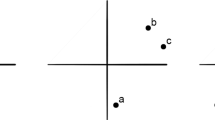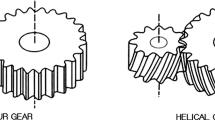Abstract
The relevance of symmetry to today's physics is a widely acknowledged fact. A significant part of recent physical inquiry – especially the physics concerned with investigating the fundamentalbuilding blocks of nature – is grounded on symmetry principles andtheir many and far-reaching consequences. But where these symmetries come from and what their real meaning is are open questions, at the center of a developing debate among physicists and philosophers of science. To tackle the problems arising in considering the symmetry issue is the main purpose of this paper. Starting with briefly recalling the bases for the discussion – how symmetry enters and operates in physics, its special effectiveness in the quantum domain and the many relevant functions it performs (Sections 1–3), the paper then focus on the general interpretative questions that arise and the sorts of answers that have been given (Section 4).
Similar content being viewed by others
REFERENCES
Castellani, E. (ed.): 1998, Interpreting Bodies. Classical and Quantum Objects in Modern Physics. Princeton University Press, Princeton.
Dirac, P.A.M.: [1930] 1987, The Principles of Quantum Mechanics. Clarendon Press, Oxford.
French, S.: 1999, Models andMathematics in Physics: The Role of Group Theory. In J. Butterfield and C. Pagonis (eds.), From Physics to Philosophy. Cambridge University Press, Cambridge, 187–207.
Frogatt, C.D. and H.B. Nielsen: 1991, Origin of Symmetries. World Scientific, Singapore.
Greene, B.: 1999, The Elegant Universe. Superstrings, Hidden Dimensions, and the Quest for the Ultimate Theory. Norton, New York.
Kreinovic, V. and L. Longpré: 1995, Unreasonable Effectiveness of Symmetry in Physics. International Journal of Theoretical Physics 35: 1549–1555.
Kosso, P.: 2000, The Empirical Status of Symmetries in Physics. The British Journal for the Philosophy of Science 51: 81–98.
Lee, T.D.: [1981] 1988, Particle Physics and Introduction to Field Theory. Harwood Academic Publishers, New York.
Mainzer, K.: 1996, Symmetries of Nature. A Handbook. de Gruyter, New York.
Morrison, M.: 2000, Groups, Gauges, and Metaphysics, ms.
Oppenheimer, R.: 1965, Nature of Matter. Purposes of High Energy Physics. In L.C.L. Yuan (ed.). Brookhaven National Laboratory.
Stewart, I. and M. Golubitsky: 1992, Fearful Symmetry. Is God a Geometer? Blackwell, London.
van Fraassen, B.C.: 1989, Laws and Symmetry. Clarendon Press, Oxford.
Weyl, H.: [1952] 1982, Symmetry. Princeton University Press, Princeton.
Wigner, E.P.: 1939, On Unitary Representations of the Inhomogeneous Lorentz Group. Annals of Mathematics 40: 149–204.
Wigner, E.P.: 1967, Symmetries and Reflections. IndianaUniversity Press, Bloomington.
Author information
Authors and Affiliations
Rights and permissions
About this article
Cite this article
Castellani, E. Symmetry, Quantum Mechanics, and Beyond. Foundations of Science 7, 181–196 (2002). https://doi.org/10.1023/A:1016035105573
Issue Date:
DOI: https://doi.org/10.1023/A:1016035105573




